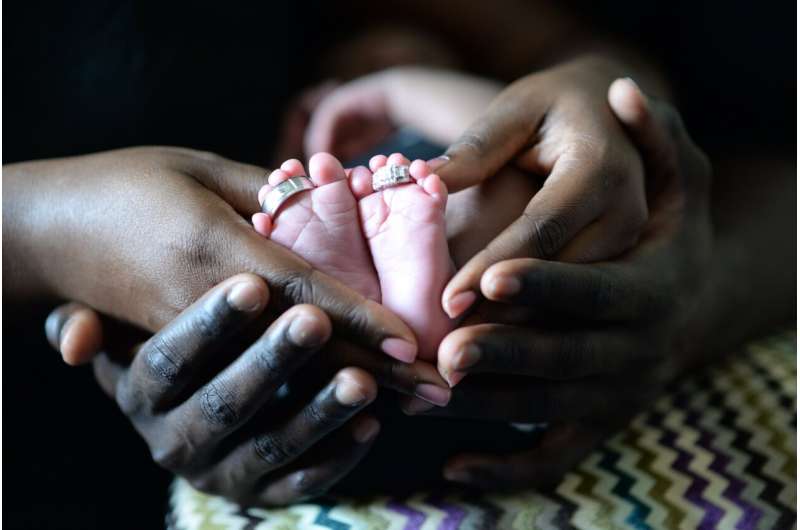This article has been reviewed according to Science X's editorial process and policies. Editors have highlighted the following attributes while ensuring the content's credibility:
fact-checked
peer-reviewed publication
trusted source
proofread
Racial and socioeconomic differences still determine survival rates of premature babies in the US, study finds

The U.S. continues to face stark inequalities in preterm birth and mortality rates between mothers of differing socioeconomic status and race, finds a new report led by UCL researchers.
The study, published in JAMA Pediatrics, examined data from the US National Centre for Health Statistics Birth Infant/Death Dataset, of over 12 million preterm infant births over the course of 25 years, between 1995 and 2020.
Preterm birth is defined as any infant born before 37 weeks and is the leading cause of infant death worldwide.
Despite its leading economic status, the US has one of the top ten highest rates of preterm births across the globe. Mothers also face large inequalities as a result of their socioeconomic status, race and geographic region.
The researchers wanted to examine how these inequalities had changed over time.
Using information reported on an infant's US birth certificate, the team considered the race of the mother, alongside her smoking status, educational attainment, antenatal care and insurance status, to see how these issues affected preterm mortality rates.
They found that, although all preterm infants born in 2020 were less likely to die than in 1995, the gap in preterm infant mortality between mothers of differing races had remained constant—with Black infants 1.4 times more likely to die following preterm birth than White and Hispanic infants.
They also found that the gap in preterm infant mortality rates between mothers of differing socioeconomic status had widened. For example, the relative risk of preterm infant mortality in mothers of a lower educational level compared to a higher education level has increased from 25% to 40%. Equally, the relative risk for mothers who smoked compared to those who didn't has increased from 20% to 30%.
Lead author, Dr. Tim Venkatesan (UCL Great Ormond Street Institute of Child Health) said, "While preterm infant mortality has improved in the US over the past 25 years, racial and socioeconomic inequalities still exist and are having a devastating effect on many families."
"Quantifying these differences is important for highlighting both the size of this issue and the need for health and social policy to close these gaps."
The researchers found that overall, the adequacy of antenatal care received by the mother was one of the biggest predictors of preterm mortality across the study period. Mothers receiving inadequate antenatal care remain at over 50% higher risk of preterm infant mortality than those with adequate care.
Dr. Venkatesan said, "We must aim to tackle the complex financial, structural, and geographical barriers that contribute to parents' ability to access antenatal care. The findings from our study add support to calls for provision of free universal antenatal care for all pregnant Americans."
More information: National Trends in Preterm Infant Mortality in the United States by Race and Socioeconomic Status, 1995-2020, JAMA Pediatrics (2023). DOI: 10.1001/jamapediatrics.2023.3487




















